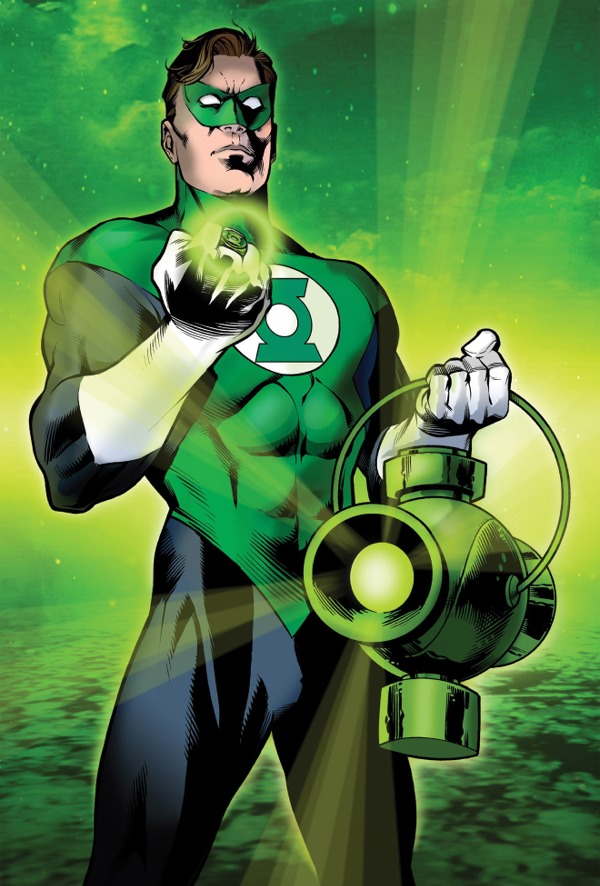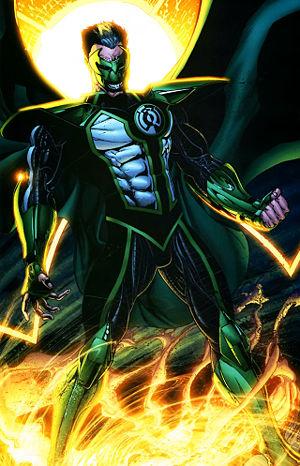
I'm extremely late to this, but a friend linked me to this post by
Matt Yglesias from all the way back in 2006 on what he called the "
Green Lantern Theory of Geopolitics." Here is an excerpt:
As you may know, the Green Lantern Corps is a sort of interstellar peacekeeping force set up by the Guardians of Oa to maintain the peace and defend justice. It recruits members from all sorts of different species and equips them with the most powerful weapon in the universe, the power ring.
The ring is a bit goofy. Basically, it lets its bearer generate streams of green energy that can take on all kinds of shapes. The important point is that, when fully charged what the ring can do is limited only by the stipulation that it create green stuff and by the user's combination of will and imagination. Consequently, the main criterion for becoming a Green Lantern is that you need to be a person capable of "overcoming fear" which allows you to unleash the ring's full capacities. It used to be the case that the rings wouldn't function against yellow objects, but this is now understood to be a consequence of the "Parallax fear anomaly" which, along with all the ring's other limits, can be overcome with sufficient willpower.
Suffice it to say that I think all this makes an okay premise for a comic book. But a lot of people seem to think that American military might is like one of these power rings. They seem to think that, roughly speaking, we can accomplish absolutely anything in the world through the application of sufficient military force. The only thing limiting us is a lack of willpower.
I don't take issue the assertion that neoconservatives of the Bush era naively believed that the United States could solve the world's problems by exercising military power. Nor do I disagree that this isn't the best way of approaching international relations.
No, I'm merely surprised that Yglesias is using the Green Lantern as a point of comparison. According to him, the power ring is the American military. It can only be wielded properly by someone with sufficient abilities to overcome fear. Completing the analogy, this would mean that Hal Jordan (or whoever you favorite Green Lantern is) is really George W. Bush, commander of the American military. The Guardians of Oa, then, are basically the people who elected Bush & Co., believing he possessed the requisite skills to command an army.
Sure, the Guardians of Oa award power rings to only those members they consider having surpassed a certain threshold of bravery, fearlessness, and willpower. But having the "guts" to engage in international military conflict isn't exactly what the Guardians had in mind. In my view, the power rings are not awarded to individuals with enough fearlessness to
use them, but with enough
fearlessness
not to.
No one would be afraid of using a power ring haphazardly. It's a power ring. It's awesome. Who wouldn't want the opportunity to shoot things with it and fly around in space? Any fool can put on a ring and blast away to his or her heart's desire. The idea is, however, that when faced with a crisis, the fearful people would be more willing to use the power ring in vastly excessive and inappropriate ways. This would more likely distrub the peace, rather than preserve it.
This is why the Guardians gave the ring to Hal, someone who they thought possessed the ability to use the ring
only when absolutely necessary. In this context, "willpower" does not mean overcoming your fear of using power offensively. It means overcoming your fear of
abusing the power. It means having restraint.
As evidence of this, consider what happens to Hal after the destruction of Coast City. He attempted to use the power ring solely for personal gain (i.e. to rebuild the city), an action the Guardians condemned. In response to this, he attacks Oa in a forceful, but ultimately futile attempt to gain control of the Central Battery, which eventually allowed him to be taken over by Parallax, a demonic and parasitic fear agent.

What we see here is that Hal's hubris, which was in fact
brought on by fear (not courage), weakened him enough to be possessed and subsequently resulted in the death of several of his fellow Green Lantern corp. The lesson is that fear is associated with the abuse of power, whereas true courage and willpower is associated with caution, thoughtfulness and restraint.
To further amplify this, take a look at who the Guardians chose as Hal's replacement: Kyle Rayner. Recall that rather than being a fighter pilot like Jordan, Rayner was actually a struggling graphic artist living in Los Angeles. Not exactly the image one conjures when thinking of a traditionally brave, fearless person, right? Yet, the Guardians were shrewd this time. Though this was never apparent, my guess is they wanted to avoid a repeat of the Hal situation. So, they gave a power ring to someone with a gift for creativity; someone who they viewed would think critically about the most effective ways of using this new found power.
I'd be interested to hear what Yglesias (and of course you guys) thinks about all of this.
 "More than Enough" in Jonah Hex #56 by Justin Gray, Jimmy Palmiotti, and Phil Windslade,
"More than Enough" in Jonah Hex #56 by Justin Gray, Jimmy Palmiotti, and Phil Windslade,












